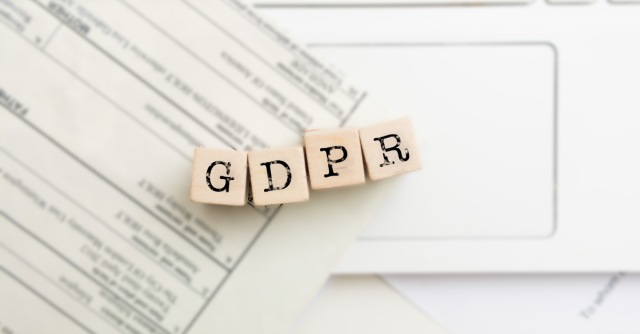What is data protection? Everything you need to know about data protection
In the digital age, “What is data protection?” is more than just a buzzword; it’s a necessity. As the amount of data we generate and store grows exponentially, so do the risks associated with unauthorized access, corruption, and loss. But fear not, for this comprehensive guide will provide you with everything you need to know about what is data protection, from its definition and importance to the principles, regulations, and best practices that govern it. So, buckle up and get ready to dive into the world of data protection and learn how to safeguard your most valuable digital assets.

Did you know?
- 98% of organizations say the cost of downtime is over $100K per hour
- 93% of corporate networks are currently penetrable by cybercriminals
- Last year alone, the US experienced 18 separate disasters with damages of over $1B
The definition of data protection
Data protection refers to safeguarding and managing data to prevent unauthorized access, loss, or corruption while ensuring its availability and integrity. Its objectives revolve around ensuring security, availability, and data management throughout its lifecycle, a concept known as data lifecycle management.
While data protection, security, and privacy may seem synonymous, there are subtle differences among them. Data protection involves the comprehensive process of managing and safeguarding data, security focuses on protecting it from unauthorized access, loss, or corruption, and privacy is about protecting personal data from unauthorized access, use, or disclosure.
Data protection can help mitigate common security issues, including unauthorized access, data loss, data corruption, malware and virus attacks, and data theft.
Data protection challenges and trends
Data protection is ever-evolving, with challenges such as increasing data volumes, rapidly advancing technology, and new regulations constantly emerging. Current data protection trends shaping the landscape include hyper-convergence, ransomware protection, and zero trust. One challenge mobile data protection faces is the difficulty of backing up and recovering data from mobile devices, as extracting data from these devices can be tricky. Inconsistent connectivity can make scheduling backups problematic.
Various data protection technologies and practices have been developed in response to these challenges, such as limiting access to duplicate data, observing activity, and responding to potential threats. These technologies and practices help organizations navigate the complex landscape of data protection and ensure the security and privacy of their most sensitive information.
The importance of data protection
The significance of data protection cannot be overstated, as it plays a crucial role in preventing data breaches, maintaining a business reputation, ensuring regulatory compliance, and enabling data recovery in case of loss or corruption. Data protection is essential in ensuring the availability and integrity of data in various contexts, from safeguarding critical data to avoiding user errors and malware attacks.
Moreover, neglecting data protection can lead to severe consequences such as financial losses, damage to reputation and customer confidence, and potential legal liability. Thus, organizations must prioritize data protection and implement robust strategies to protect their valuable data assets.
Different data types and categories
Understanding different data types and categories is crucial for effective data protection. Data can be classified into personal data (identifiable information), sensitive data (race, religion, political views, etc.), confidential data (trade secrets), and anonymous data (which cannot be traced back to an individual).
Each data type requires different protection measures, depending on their sensitivity and potential impact if compromised.
Personal data
Personal data is any information that pertains to an identified or identifiable individual, including but not limited to name, address, phone number, and email address. This type of data is subject to data privacy considerations, as unauthorized access or misuse can lead to significant consequences such as identity theft and financial loss.
Data privacy is an important issue, as it can have profound implications for individuals and organizations, especially in the event of a data breach.
Sensitive data
Sensitive data encompasses private or confidential information, such as race, religion, political views, and more. The importance of safeguarding sensitive data lies in ensuring the safety and security of individuals and organizations, as unauthorized access can result in severe repercussions, including identity theft and financial loss.
To protect sensitive data, organizations must implement effective methods of data discovery process such as identifying and evaluating potential risks and vulnerabilities, instituting security measures, formulating a data protection policy, and providing training and awareness programs.
Confidential data
Confidential data is information not intended for public sharing, including personally identifiable information, financial data, trade secrets, and other sensitive information. Safeguarding confidential data is crucial due to its sensitive nature, as unauthorized access, disclosure, or theft can lead to dire consequences such as identity theft or financial loss.
To protect, organizations must adhere to data protection regulations and standards like GDPR, CCPA, PCI DSS, and HIPAA.
Anonymous data
Anonymous data refers to data processed to eliminate any personally identifiable information. This type of data cannot be linked to a specific individual, so it is not subject to the same regulations as personal data. It can be used for research or statistical purposes without violating privacy regulations.
However, organizations should still ensure that any anonymous data they collect is securely stored online and offline storage is managed in compliance with data protection regulations.
Data protection principles
Data protection principles, such as lawfulness, fairness, transparency, storage limitation, data minimization, integrity, confidentiality, accuracy, and accountability, are essential for ensuring the proper handling and protection of data. These principles guide organizations in their data protection efforts, helping them navigate the complex landscape of data privacy and security regulations, including data protection laws while safeguarding the interests of data subjects.
Organizations must ensure that their data protection practices align with these principles, as failure to do so will result in data loss.
Lawfulness, fairness, and transparency
Adhering to the law, fairness, and transparency are crucial in data protection. Lawfulness implies that personal data must be processed in accordance with the law, and controllers and processors must not engage in any activity with personal data that is illegal in a broader sense. Fairness necessitates that personal data be managed fairly and openly, considering the interests of data subjects.
Transparency requires that controllers and processors provide data subjects with clear and understandable information about how their data is processed.
Storage limitation
The storage limitation principle dictates that personal data should only be retained for the duration necessary for the purposes they were collected. This principle is essential as it helps ensure that personal data is not held longer than necessary, minimizing the risk of unauthorized access or other security incidents.
To comply with storage limitations, organizations should identify sensitive data, assess risks and vulnerabilities, implement security measures, develop a data protection policy, and conduct regular auditing and monitoring.
Data minimization
Data minimization restricts the acquisition of personal information to only that which is essential and pertinent. Its significance in data protection lies in reducing data storage costs, enhancing data availability and security posture, reinforcing data privacy measures, and streamlining business operations.
Organizations should identify sensitive data, assess risks and vulnerabilities, and implement security measures such as encryption, access controls, and data loss prevention to achieve data minimization.
Integrity and confidentiality
Data integrity and confidentiality are both integral components of data protection. Data integrity guarantees that data is accurate, complete, and consistent throughout its lifecycle, helping to ensure that decisions and actions are not based on inaccurate or incomplete data. Continuous data protection is crucial in maintaining this integrity and safeguarding sensitive information.
Data confidentiality guarantees that data is only accessible to individuals or systems authorized to do so, protecting data from unauthorized access, use, or disclosure. Both principles are essential in safeguarding data and ensuring its availability in various contexts.
Accuracy
Accuracy in data protection is crucial, as it ensures that data is in line with reality, enabling more informed decisions and reducing risk. Inaccurate data can result in erroneous profiles and decisions in automated decision-making processes.
Ensuring data accuracy is essential in preventing such negative consequences and maintaining the integrity and value of data.
Accountability
Accountability in data protection requires organizations to adhere to data protection regulations and deploy suitable technical and organizational measures to safeguard personal information. It also guarantees that organizations can demonstrate what they did and its effectiveness when requested.
Accountability is essential in data protection regulations and standards, such as GDPR, CCPA, PCI DSS, and HIPAA, which require organizations to be accountable for their data protection practices and adhere to the regulations and standards.
Data protection regulations and standards
Data protection regulations like GDPR, CCPA, PCI DSS, and HIPAA govern data collection, storage, and use, ensuring privacy and security for individuals and organizations. These regulations and standards help organizations navigate the complex landscape of data protection and provide a framework for implementing effective data protection strategies and best practices.
By adhering to these regulations and standards, organizations can ensure that they are protecting their most sensitive data and maintaining the trust of their customers and stakeholders.
General data protection regulation (GDPR)
The General Data Protection Regulation (GDPR) is a comprehensive data protection law implemented in the European Union in 2018. The GDPR encompasses all data related to EU citizens, regardless of the location of the organization collecting the data. It applies to all individuals whose data is stored within the European Union, regardless of nationality. Organizations must adhere to GDPR or face penalties of up to 20 million euros or 4% of the previous fiscal year’s global revenue, whichever is greater.
The General Data Protection Regulation (GDPR) protects personal data from being compromised. This includes name, ID number, date or address of birth, web analytics data, medical information, and biometric data.
California consumer privacy act (CCPA)
The California Consumer Privacy Act (CCPA) is a data privacy law enacted in California in 2018, giving consumers greater control over the personal information that businesses collect from them. The CCPA affords consumers the right to be informed of what personal information is being collected about them, the right to request the deletion of their personal information, the right to opt out of the sale of their personal information, and the right to receive equal service and price, regardless of whether they exercise their privacy rights.
Businesses are required to comply with these rights, provide notice to consumers about their data collection practices, and ensure that they are adhering to the CCPA.
Payment card industry data security standard (PCI DSS)
The Payment Card Industry Data Security Standard (PCI DSS) is a cybersecurity standard outlining security policies and requirements for organizations that handle payment card data. PCI DSS encompasses safeguarding account data, maintaining a vulnerability management program, implementing robust access management and control measures, and regularly monitoring and testing networks.
By adhering to PCI DSS, organizations can ensure the security of sensitive payment card data and reduce the risk of data breaches and financial losses.
Health insurance portability and accountability act (HIPAA)
The Health Insurance Portability and Accountability Act (HIPAA) is a federal law that mandates national standards to safeguard sensitive patient health information from being divulged without the patient’s authorization or cognizance. HIPAA encompasses all medical records and other individually identifiable health information utilized or revealed by a covered entity in any form, whether electronically, on paper, or orally.
By adhering to HIPAA, healthcare organizations can ensure the privacy and security of sensitive patient information, maintaining trust and compliance with federal regulations.
Data protection strategies and best practices
Data protection strategies involve identifying sensitive data, assessing risks and vulnerabilities, and implementing security measures such as encryption, access controls, and backups to protect data. Organizations can effectively safeguard their most sensitive information from unauthorized access, corruption, and loss by following a comprehensive data protection strategy and using data protection tools.
In addition to these general strategies, organizations should consider implementing industry-specific best practices and adhering to relevant data protection regulations and standards to ensure comprehensive data protection.
Identifying sensitive data
Identifying sensitive data is a crucial first step in data protection, as it allows organizations to implement targeted security measures to safeguard the most valuable and vulnerable information, such as personal data revealing racial or ethnic origin, political opinions, religious or philosophical beliefs, trade-union membership, genetic data, biometric data processed solely to identify a human being, health-related data, and data concerning a person’s sex life or sexual orientation.
By accurately identifying sensitive data, organizations can take proactive steps to secure their most critical assets and minimize the risk of data breaches and other security incidents.
Assessing risks and vulnerabilities
Evaluating risks and vulnerabilities is an essential part of data protection, as it helps identify potential internal and external threats and weaknesses in the system, enabling proactive steps to be taken to prevent data breaches and protect sensitive information. Regular security and risk management assessments can help detect weaknesses in the network and reduce any risk to the organization’s reputation and data integrity.
Assessing risks and vulnerabilities helps organizations implement essential security controls in applications and prevent application security defects and vulnerabilities.
Implementing security measures
Implementing security measures is a critical component of data protection. Measures such as encryption, access controls, and backups can help safeguard sensitive data from unauthorized access, corruption, and loss, and it doesn't have to break the bank.
In addition to these general security measures, organizations should explore data protection technologies like data loss prevention (DLP), storage with integrated data protection, firewalls, and endpoint protection to further secure their data. By implementing comprehensive security measures and storage technologies, organizations can protect their most valuable data assets and minimize the risk of data breaches and other security incidents.
Creating a comprehensive data protection plan
Creating a comprehensive data protection plan is essential for organizations to effectively safeguard their sensitive data and comply with data protection regulations. Whether you do it yourself or outsource, a data protection plan should include developing a data protection policy, providing employee training and awareness programs, and conducting regular audits and monitoring to ensure compliance and effectiveness.
By implementing a well-rounded data protection plan, organizations can proactively address potential risks and vulnerabilities, ensure the security of their data assets, and maintain the trust of their customers and stakeholders.
Developing a data protection policy
Creating a data protection policy is essential for ensuring compliance with data protection regulations and providing clear guidance for employees and stakeholders on managing confidential information. A comprehensive data protection policy should detail the protections required for different data privacy levels and include procedures for auditing safeguards to ensure that data protection solutions are applied accurately.
By using backup data and developing a robust data protection policy, organizations can effectively manage their data assets and minimize the risk of data breaches and other security incidents.
Training and awareness programs
Training and awareness programs play a vital role in data protection, as they help employees understand the basics of data protection, the laws governing data privacy, and the company’s policies. These programs also educate employees on recognizing potential risks and responding appropriately, which can help prevent data breaches caused by human error.
Implementing effective training and awareness programs can empower employees to take responsibility for the security of their organization’s data and contribute to a culture of data protection.
Regular auditing and monitoring
Regular auditing and monitoring are essential in data protection, as they help identify potential security breaches, ensure compliance with data protection regulations, and provide a means of evaluating whether an organization is fulfilling its data protection obligations.
By conducting regular audits and monitoring data protection activities, organizations can proactively address potential risks and vulnerabilities, maintain the security of their data assets, and demonstrate their commitment to data protection and privacy.
Summary
In conclusion, data protection is critical to modern business operations, as it helps organizations maintain the security and privacy of their most valuable data assets. Organizations can effectively safeguard their sensitive data from unauthorized access, corruption, and loss by understanding the different data types and categories, implementing data protection principles, adhering to data protection regulations and standards, and following data protection strategies and best practices. As the digital landscape continues to evolve, it is vital for organizations to stay abreast of data protection trends and continually adapt their strategy to ensure the security of their data and the trust of their customers and stakeholders.
Are you prepared for the unexpected?
Here at Flexential, we know implementing data protection into ongoing operations can be challenging—yet we also know how critical it is to ensure all data and workloads are adequately protected. But where do you start?
Download our white paper, "Disaster Recovery: What You Need to Know to Prepare for the Worst,' to learn how to assess risk, plan for downtime, and implement a comprehensive disaster recovery strategy at your organization.







